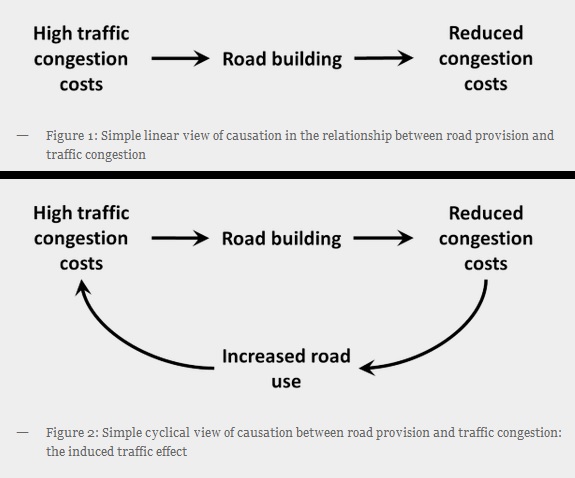It’s been said that Staten Island is stylistically stuck in another era, and with news of another multi-million dollar roadway expansion, it’s becoming clear that transportation priorities in the borough are also a few decades old.
Governor Cuomo’s office announced yesterday that Staten Island’s West Shore Expressway will be getting two new ramps and an expanded service road, all of which is intended to reduce congestion for drivers in New York City’s most transit-starved borough:
“New York cannot be a center of commerce if our roads are centers of congestion,” Cuomo said in a statement. “Reducing traffic congestion on the West Shore Expressway, a major artery for Staten Island residents and business, will be good for commuters, good for business and good for our environment.”

Not surprisingly, the plan has garnered support from Staten Island’s elected officials, including Borough President James Oddo, who once expressed interest in allowing motorists to use bus lanes, State Senator Andrew Lanza, who was a driving force behind getting toll reductions on the Verrazano-Narrows Bridge, and one of New York City’s most reliable motorist advocates, Councilmember Vincent Ignizio.
While the $7 million West Shore Expressway makeover was heralded as “great news for Staten Island drivers,” the reduced congestion will be short-lived because it’s impossible to build your way out of congestion. Study after study has shown that greater roadway capacity only leads to more traffic thanks to a phenomenon known as “induced demand.”
When engineers increase the supply of road space, the time cost of driving goes down. Congestion is reduced, but only for a little while. When the time cost of driving on a given road is lowered, more drivers end up gravitating toward that road because there’s more space for cars. Eventually, all this new demand obliterates any congestion relief that the project once achieved. The road is once again congested, and the highway engineers are left scratching their heads.
Instead of encouraging driving by adding to the supply of road space, Governor Cuomo must start to consider more sustainable ways to solve Staten Island’s congestion problems. For example, instead of putting $7 million toward this roadway expansion and another $14 million toward Verrazano toll relief, the governor should put his influence behind bus rapid transit for Staten Island’s West Shore.

Perhaps with VMT leveling off and falling, that is no longer true. The real test of this will be massive expansion of the Staten Island Expressway. Proceeding without an EIS (except perhaps one after the fact to keep the “temporary” lanes) with the tacit approval of those who demand EISs for bike lanes.
[…] Tri-State Slams SI Highway Expansion: “It’s Impossible to Build Your Way Out of Congestion” (MTR) […]
You mention Borough President James Oddo, who recently suggested Staten Island motorists be allowed to drive their cars in bus lanes, and City Councilman Vincent Ignizio, who once encouraged Staten Island drivers to park their cars in bike lanes and for the police to refrain from ticketing them. (Staten Island has seen at least one assault on a cyclist in a bike lane and this year had a man killed by a motorist in a bike lane).
Mr. Ignizio’s latest is a law that would mandate placing pedestrian countdown timers at all intersections equipped with red light cameras. Drivers use these timers to gauge how many seconds they have to “beat the light”, co-sponsor Steve Matteo (Council District 50) has admitted this is the main reason for the bill, which would also lead to the timers placed at intersections with short crossing distances, where NYC DOT says they are not effective.
Related article….Ignizio Bill Would Turn Pedestrian Timers Into Countdown Clocks for Drivers http://tinyurl.com/kwd3h8v